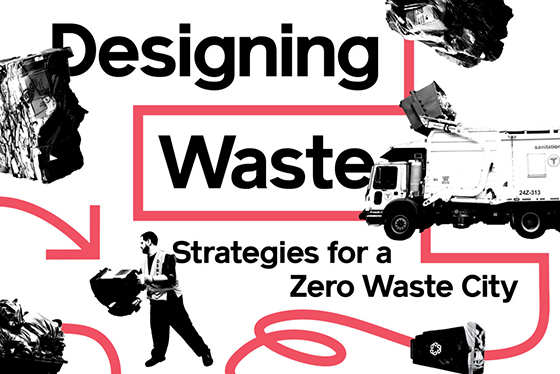Designing Waste Symposium

The Center for Architecture is currently featuring Designing Waste: Strategies for a Zero Waste City, an exhibition based on the Zero Waste Design Guidelines. Open throughout the summer, this exhibition gives visitors an opportunity to discover how the city manages waste in buildings and neighborhoods, and how design can help reduce the amount of waste that goes to landfills.
Kicking off the Summer Exhibition, the June 16th Designing Waste Symposium examined how architects, designers, and building professionals can help New York City reduce waste, focusing on the segment of the waste stream: the period between when waste is discarded and when it rolls away on the back of a truck. Dattner Architects’ Principal, John Woelfling, joined the symposium to discuss the Battery Park City Parks Conservancy Maintenance Facility (BPCPCMF) and the strategic design of the building to reduce waste in Battery Park City.
Designed by Dattner Architects, the BPCPCMF presents an ideal Case Study in the Zero Waste Design Guidelines. The BPCPCMF vertically organizes Battery Park City Parks Conservancy’s extensive maintenance activities within the first four floors of a high-rise residential building, while also providing offices for a staff of over 100, classrooms for community workshops, truck and bicycle storage, composting areas, and high/low density storage. The facility features a unique Centralized Compactor that can be used by other buildings in the surrounding area. Instead of piling bags of refuse on the sidewalk for pickup, porters now deliver bags to a shared compactor each day. Not only has this strategy addressed neighborhood waste issues, but it also has been very popular with porters and an example that can be applied in other communities.
In concurrence with these zero waste initiatives, AIA NY and the Durst Organization have launched the Zero Waste Challenge. A call to action for all architecture firms to reduce their waste generation and increase recycling in their offices. Participation includes benchmarking waste generation, creating a new waste management plan, performing waste assessments, and reporting on final improvements in October.